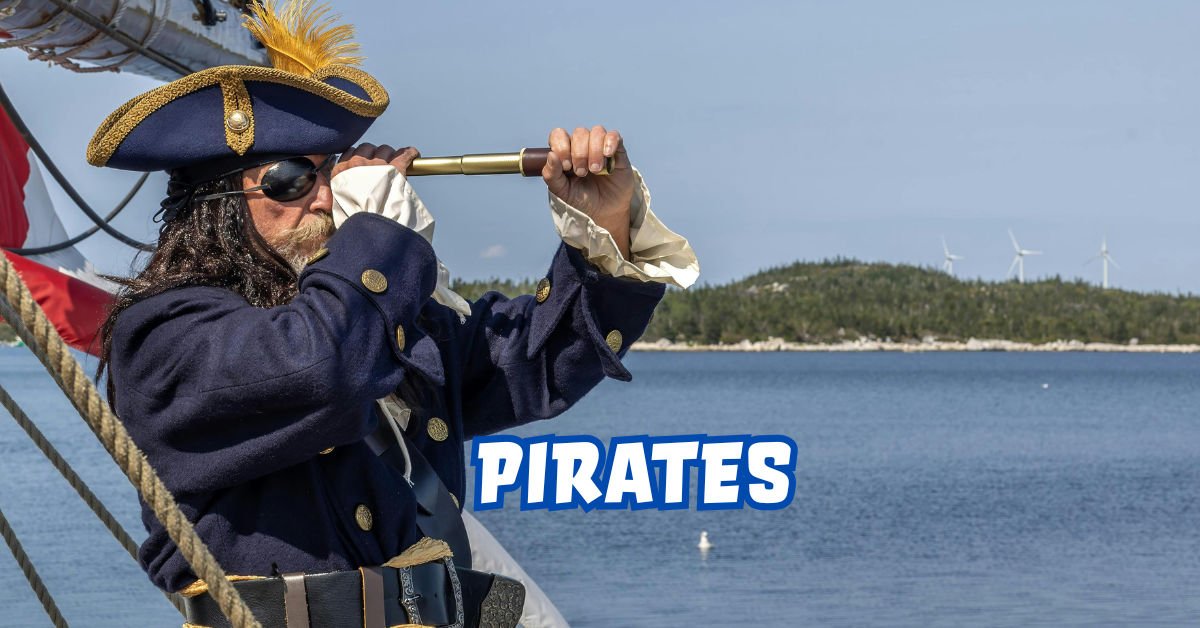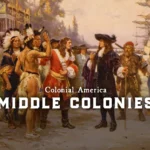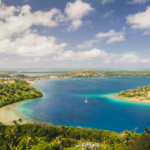Pirates have long captivated human imagination—figures of rebellion, adventure, and mystery sailing across the vast blue oceans. But behind the swashbuckling tales of treasure maps, hidden coves, and parrots on shoulders lies a story of survival, exploitation, and global trade. The term “pirate” evokes vivid images: black flags with skulls, cannon fire over turbulent waters, and captains steering wooden ships through storms. Yet, the real history of piracy stretches far beyond the Caribbean fantasies created by novels and films. It is a chronicle that mirrors human ambition, greed, courage, and desperation.
Piracy, at its core, is as old as seafaring itself. From the ancient Mediterranean to the South China Sea, pirates have thrived wherever trade routes offered opportunity. They were not merely criminals but often products of political instability, economic disparity, and the collapse of naval order. Understanding piracy is understanding a darker undercurrent of global commerce—one that has never fully disappeared.
In today’s interconnected world, modern piracy still exists—from the Somali coast to the Strait of Malacca—though it has evolved with technology and geopolitics. To understand pirates is to study humanity’s relationship with the sea: one of exploration and exploitation, adventure and atrocity. As historian Marcus Rediker once said, “The pirate ship was a floating microcosm of society itself—part democracy, part tyranny, and always in pursuit of freedom.”
The Origins of Piracy: Ancient Waters and Early Empires
Piracy traces back to ancient civilizations such as the Greeks, Phoenicians, and Romans, who all faced sea raiders targeting merchant ships. The earliest recorded instances appear in Egyptian archives dating as far back as 1350 BCE, describing attacks by the enigmatic “Sea Peoples.” These groups disrupted Mediterranean trade networks, signaling the dawn of maritime conflict.
During the Roman Empire, piracy became a significant threat in the Mediterranean. Pirates based in Cilicia (modern-day Turkey) terrorized trade routes, capturing cargo and enslaving passengers. The Roman Senate eventually empowered Pompey the Great in 67 BCE to eradicate piracy, an effort that led to one of history’s first organized anti-pirate campaigns. However, piracy was never truly eliminated; it simply adapted.
The collapse of central authority during the Middle Ages saw a resurgence of pirates across the North Sea and the Baltic. Viking raiders, often labeled as pirates, launched devastating attacks on coastal settlements, blending warfare with plunder. The line between naval warfare and piracy was often blurred, as rulers sometimes sanctioned piracy for political ends.
The Golden Age of Piracy: 1650–1730
The so-called “Golden Age of Piracy” remains the most romanticized and widely studied period. Spanning the late 17th and early 18th centuries, it was driven by the expansion of European empires, global trade, and the return of privateers after wars ended.
| Era | Approximate Dates | Key Regions | Notable Figures |
|---|---|---|---|
| Buccaneering Era | 1650–1680 | Caribbean, Spanish Main | Henry Morgan, François l’Olonnais |
| Post-War of Spanish Succession | 1715–1726 | Atlantic, Indian Ocean | Blackbeard, Charles Vane, Calico Jack |
| Decline and Suppression | 1726–1730 | West Africa, Caribbean | Bartholomew Roberts, Anne Bonny |
The Caribbean became the epicenter of pirate activity due to the wealth of Spanish treasure fleets and the lack of centralized naval control. Pirates like Edward Teach—better known as Blackbeard—became legends. His terrifying image, complete with smoking fuses in his beard, was part of a psychological tactic to paralyze enemies with fear.
Pirates established their own informal republics, such as Nassau in the Bahamas, where laws were minimal, and equality among crew members was often upheld. In contrast to the rigid hierarchies of naval and merchant vessels, pirate crews voted on leadership and shared plunder equally. This democratic structure, though born of necessity, offered one of the earliest experiments in collective governance at sea.
Pirate Codes and Governance
Despite their lawless image, pirates often followed strict codes of conduct. Known as “Articles of Agreement,” these written rules governed behavior aboard ships, distribution of loot, and even medical care. The fairness of these agreements often attracted sailors who had suffered exploitation under harsh captains in the merchant navy.
For instance, each crew member was entitled to a share of the profits, with captains receiving slightly more but far less than traditional naval officers. Compensation for injuries was common—a lost limb could earn a sailor a set amount of gold. Punishments for theft, cowardice, or betrayal were severe, often resulting in marooning or execution.
| Pirate Code Provisions | Description |
|---|---|
| Equal division of plunder | Each crew member received an agreed share of loot. |
| Injury compensation | Payment for loss of limbs or eyes during battle. |
| Democratic decision-making | Crews voted on major voyages and leadership. |
| Strict punishment | Theft, desertion, or mutiny could result in death. |
The paradox of piracy lies in this structure—organized rebellion. Pirates existed outside of state authority but replicated systems of order and justice within their own world.
Women and Piracy: Breaking the Waves of Tradition
Though rare, women played crucial roles in piracy, defying both gender norms and maritime law. Anne Bonny and Mary Read stand as two of the most famous female pirates, sailing with “Calico Jack” Rackham in the Caribbean. Both disguised themselves as men to gain respect among crews, only revealing their identities after earning reputations as fierce fighters.
Their stories challenge the perception that piracy was exclusively male-dominated. Some historians suggest that women found in piracy a rare form of liberation in a patriarchal society. Their participation highlights how pirate culture, while brutal, occasionally broke social hierarchies that constrained women elsewhere.
Pirates in Asia and the Indian Ocean
While Western narratives focus on the Caribbean, piracy thrived equally across Asia. The South China Sea was a hub for pirate activity during the Ming and Qing dynasties. Zheng Yi Sao, a formidable Chinese pirate queen of the early 19th century, commanded an armada of over 300 ships and 20,000 crew members—arguably the largest pirate force in history.
In the Indian Ocean, pirates like Henry Every and Olivier Levasseur targeted Mughal and Arab merchant vessels, plundering enormous treasures. The global reach of these pirates connected continents through both terror and trade, influencing maritime law and colonial strategies.
Modern Piracy: Technology on the High Seas
Contrary to popular belief, piracy did not vanish with wooden ships and cutlasses. Modern pirates still operate, often in impoverished or politically unstable regions. The coast of Somalia, the Gulf of Guinea, and the Strait of Malacca are notorious for such attacks.
Today’s pirates employ speedboats, GPS, and automatic weapons rather than cannons and compasses. Their motives, however, remain the same—profit and survival. The international community has responded with naval patrols, anti-piracy laws, and technological surveillance. Yet, piracy persists, revealing the enduring imbalance between rich maritime nations and coastal communities with few economic alternatives.
Cultural Legacy: Pirates in Literature and Film
Pirates transitioned from real-world menace to romantic heroes through literature and film. Works like Treasure Island by Robert Louis Stevenson and Pirates of the Caribbean redefined piracy as adventure and rebellion rather than crime. These portrayals highlight humanity’s fascination with freedom and defiance.
As author Philip Gosse once wrote, “The pirate is the eternal outlaw, the dreamer of freedom beyond the law.” Such depictions, though historically inaccurate, keep the pirate spirit alive in popular imagination—symbolizing resistance against authority and the yearning for uncharted horizons.
Economic and Political Dimensions of Piracy
Piracy has always been intertwined with economic systems. Many pirates were former sailors abandoned by the state after wars or trade collapses. In this sense, piracy was both rebellion and survival strategy. Nations sometimes used pirates as privateers—state-sanctioned raiders authorized to attack enemy ships.
This blurred moral line reveals how piracy and power coexisted. Governments profited indirectly from piracy when it weakened rival empires. Yet, when peace returned, those same pirates were hunted and executed.
The Decline of Classical Piracy
By the 1730s, the Golden Age ended. Naval power expanded, and maritime law became more coordinated. Many pirates were captured and hanged, serving as grim warnings to others. The British Royal Navy’s dominance played a crucial role, backed by global trade networks that made piracy less sustainable.
However, the legend of piracy lived on through folk songs, stories, and art. The “Jolly Roger,” once a symbol of terror, became a cultural icon—representing rebellion, adventure, and a yearning for independence.
Conclusion: The Eternal Allure of Pirates
Pirates are more than historical criminals—they are symbols of the human spirit’s defiance against control, oppression, and inequality. Whether ancient raiders or modern hijackers, they expose the contradictions of our global order: freedom built on plunder, and justice shaped by power.
In every era, pirates have forced society to confront uncomfortable truths about greed, authority, and the fragile line between order and chaos. They embody a timeless duality—villains to some, heroes to others, but undeniably central to the story of the sea itself.
As maritime historian David Cordingly aptly observed, “The age of piracy may be gone, but the idea of the pirate—free, daring, untamed—will forever sail the human imagination.”
FAQs
1. What is the true definition of a pirate?
A pirate is a person who engages in robbery or criminal violence at sea, targeting ships, cargo, or coastal settlements without state authorization.
2. When was the Golden Age of Piracy?
The Golden Age of Piracy occurred roughly between 1650 and 1730, marked by figures such as Blackbeard and Anne Bonny.
3. Do pirates still exist today?
Yes. Modern piracy occurs mainly near Somalia, in the Gulf of Guinea, and along Southeast Asian trade routes, often involving armed hijackings.
4. Were all pirates criminals?
Not necessarily. Some were privateers authorized by governments to attack enemy ships, blurring the line between legality and piracy.
5. Why do pirates remain so popular in culture?
Pirates symbolize freedom, rebellion, and adventure—values that resonate deeply in literature, film, and modern storytelling.











